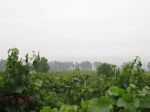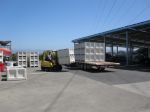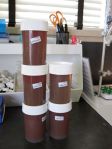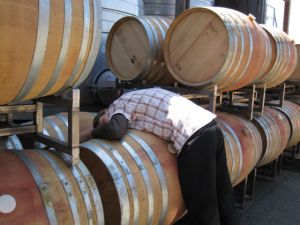
The process of preparing for harvest begins with cleaning. The fermenters are covered in cobwebs and pigeon droppings, despite the bird netting. Last years wine is bottled, or mellowing in barrels. You drag hoses from place to place, filling buckets, and spraying the tanks. You mix solvents, cleaners, sanitizer. You climb in through port holes, stainless steel gymnastics, vinifying yoga. You scrub, spray, rinse, and exit in reverse. Repeat. Barrels are

cleaned. Dark berry and carmel wood aromas are being washed out and into a grate in the concrete. You seal the tanks with rubber gaskets, clean tarpaulin covers and plastic sheets. Dozens of different types of containers pile up. Macro bins, five gallon buckets, French oak barrels, steel kegs, glass bottles. Plumbing is everywhere; water, glycol, nitrogen, air. As grapes become wine, we will begin to juggle them from one container to another. Pumps pushing must into tanks, nitrogen pushing newly fermented wine into barrels.

Wine, as an agricultural produce takes time, preparation, planning, thought. It is not a product that can be delivered to market carelessly or immediately. You think about it, test it, sort it, process it, package it, market it, ask it to be considered, consumed thoughtfully. Producing wine is very involving. There is a considerable team of people working in concert, for the next few months trying to transform raw fruit into a value added product, a more complex expression, a preserved context. But for now, we wait for the grapes to ripen. They are on their own schedule, carefree of our desires. They ripen slowly, we sample them, de-stem them, crush them strain them, then test them, for sugars and acids. And we wait.
No comments:
Post a Comment